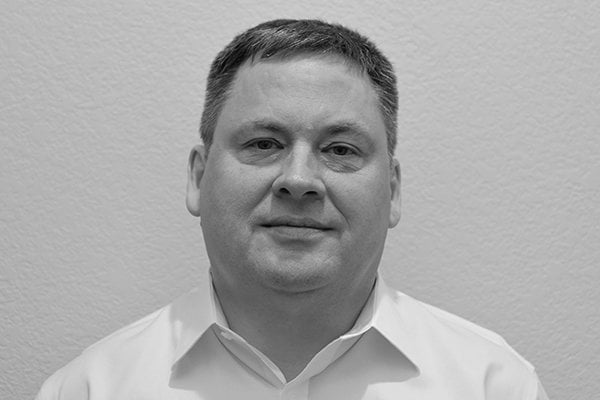www.magazine-industry-usa.com
08
'20
Written on Modified on
COVID-19: NOW WHAT?
Editorial by Kip HANSON.

Viruses. Bacteria. Fungi. They’re invisible to the human eye. And yet, they exist anywhere there’s life, and sometimes, even where there’s not. In fact, our microscopic neighbors are so small, so varied, and so numerous that— ultimately—it’s we who live in their world, outnumbered in ways that are difficult to fathom.
Most are harmless. Some are even essential to the proper functioning of macro-organisms such as plants, animals, and yes, humans. But occasionally, a dangerous strain causes damage that is as fundamental as it is unexpected. And so it is today. Statistics on lethality and transmissibility aside, COVID-19 has and will continue to have repercussions thus far unparalleled in the history of our global economy and the industry on which it depends.
Protecting production
A number of us have been personally affected, some with disruptions to their daily routines, others in more profound ways. Sadly, it’s only a matter of time until everyone can say the same. As soon as the health crisis began, factories had to think about employee protection in ways they never had before. As a result, there were production cuts and even temporary site closures until these troubling questions could be resolved. These were followed by supply chain challenges, order postponements, and even cancellations, often leading to deep changes in production floor organization.
No one’s questioning the reasons for these changes, nor their necessity, but many are now asking: how long will they last? Cities, regions, countries, and even continents have endured confinement for varying lengths of time. Some, mistakenly thinking the worst was behind them, have had to start over. Through it all, governments have tried to limit the impact of these shutdowns and stay-at-home orders on their economies, fearing collapse. Depending on the state or country, they’ve been more or less creative, and more or less successful.
The same can be said for businesses. For most small enterprises, the goal has been to strengthen their balance sheet, meaning increased capital and ownership of machinery, inventory, cash, and other assets. The solutions put in place by governments, on the other hand, negatively impact these companies’ liabilities, increasing corporate debt through zero or near-zero interest loans. In the short term, this has been a huge relief to business owners and their employees. Long term? Significantly increased output and revenue will be needed to pay these loans back.
Halting the crisis
At the same time, many countries (in Europe, at least) are cutting taxes and helping finance business operations in the short-term. This offers considerable advantages, chief among them the fact that companies don’t lose their skilled workers and employees aren’t left without resources on which to live. Again, it’s a huge relief for those concerned with the immediate future. Yet this virtuous solution will produce long-term government debt that will have to be repaid at some point.
That said, public opinion—the youngest among us in particular—is calling for profound changes in the way the world works. All this because of a tiny bit of genetic material that none of us can see.
For industrial decision-makers, it’s a complicated situation. Let’s avoid painting a picture that’s too bleak or black and white, however; prime-time television shows and social networks are already doing that. But simply put, business leaders will have to adjust their strategies if they’re to go further in this strange new world. They must be both agile and flexible, and know how to test and validate assumptions quickly. We can expect that many markets—especially those that are underdeveloped—will be reborn differently after the crisis. In the meantime, we must all learn to survive in this sometimes scary new world, and continue doing what we are best at: producing value.
So, what now?
At the end of the 19th century, Louis Pasteur taught medical practitioners that they could slow the spread of microorganism-related disease by washing their hands and scalding their utensils between each procedure. Though there was still a great deal to learn, we were beginning to understand how viruses and microbes behave. More than one century later, COVID-19 has shown us that we are still learning. The good news is, we know how to limit and even prevent its spread. Sanitizing gels, masks, gloves, visors, social distancing and continuous vigilance ... thus far, these are the only weapons available to us in our ongoing battle against an unseen foe.
Industry is adapting. Aside from the precautions just listed, production areas are seeing the deployment of plexiglass walls. Employee arrival and departure times are now staggered, while tools, workstations, and door handles are regularly disinfected. Many operating procedures and protocols have been revised, with more changes to come, not the least of which are new roles and responsibilities regarding health and safety management.
Moreover, the phenomenon of reshoring has been accelerated by this pandemic, which spares no country. New ideas abound at the heart of industrial production platforms. Many in the industry have come to realize that they will need to relocate, rebuild, and re-equip machinery and production workshops if they’re to remain competitive. With this comes renewed emphasis on the environment and sustainability, with a host of control systems, field networks, sensors, actuators, and other industrial equipment growing smarter and more energy-efficient.
Underlying all this change is an uncertain political landscape, particularly in the United States. The past three and a half years have yielded shattered alliances, failed treaties, broken agreements, and a level of international distrust that hasn’t existed since the Cold War. Then came the Coronavirus. With U.S. elections looming in November and a president who suggests he might not leave the White House regardless of the electorate’s will, the rest of the world must be wondering: what next?

